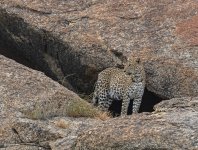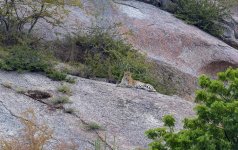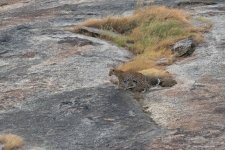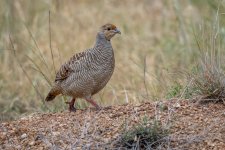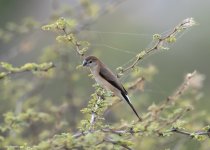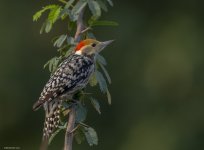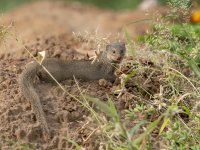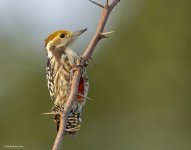I returned yesterday from a 4 day trip with friends. The place was Bera in Rajasthan - a flat arid plan with small hills and out rops at the edge of the Thar desert. The primary objective was to spot wild Leopards and we did - quite successfully.
Even if hasn't rained this year, there were intermittent clouds. The Leopards preferred hill sides that did not receive direct sun. So we had wide rocky expanses to scan from quite afar - low contrast and all - for a Cat that is known for its superb camouflage. I had carried my ZFL 10x42s and they came very handy in picking out the Leopards against the rocks. Had some very nice sightings.
The birdlife was typical to this season and the desert. A refractile patch of land next to a road had 5 Yellow-wattled Lapwings. The mornings saw hundreds of Rose-ringed. parakeets and a few Plum-headed Parakeets noisy flitting between Neem Trees. Grey Francolins, Indian Robin, Indian Silverbills were numerous. A solitary Quail jumped away into the grass, startled by our car. A single Nightjar, probably a Savannah Nightjar, was sitting n the middle of a dirt trail, early in the morning. It flew off as we came near. Common babblers were plentiful and actually have a melodious call, unlike the Jungle Babblers which were also easy to sight.
The area is home to traditional herdsmen - the Rebaris. Numerous goat and sheep graze on common land and hill sides. There were many Cattle Egrets following the herds. A lone Oriental Honey Buzzard kept circling a hilltop on which a male Leopard was idly sitting. It was also fun to see the hovering of a Black-winged Kite.
One morning we chanced upon a family of 3 Yellow-crowned Woodpeckers. It was fun to see them. The adults were exceptionally colourful. The Only Kingfisher seen was an occasional White-throated Kingfisher sitting on an overhead wire. Red-rumped Swallows and Dusky Crag Martins were on the wing, especially at sunset. Guessing that they roost in the rock caves that abound. Peacocks were many - always in groups, wary of the predators. A few Ashy-crowned Sparrow Larks were also sighted - busy dust bathing.
All in all - a very nice trip indeed.
All photographs were by a Nikon D500 and a Nikkor 500/5.6 PF.
Arijit
